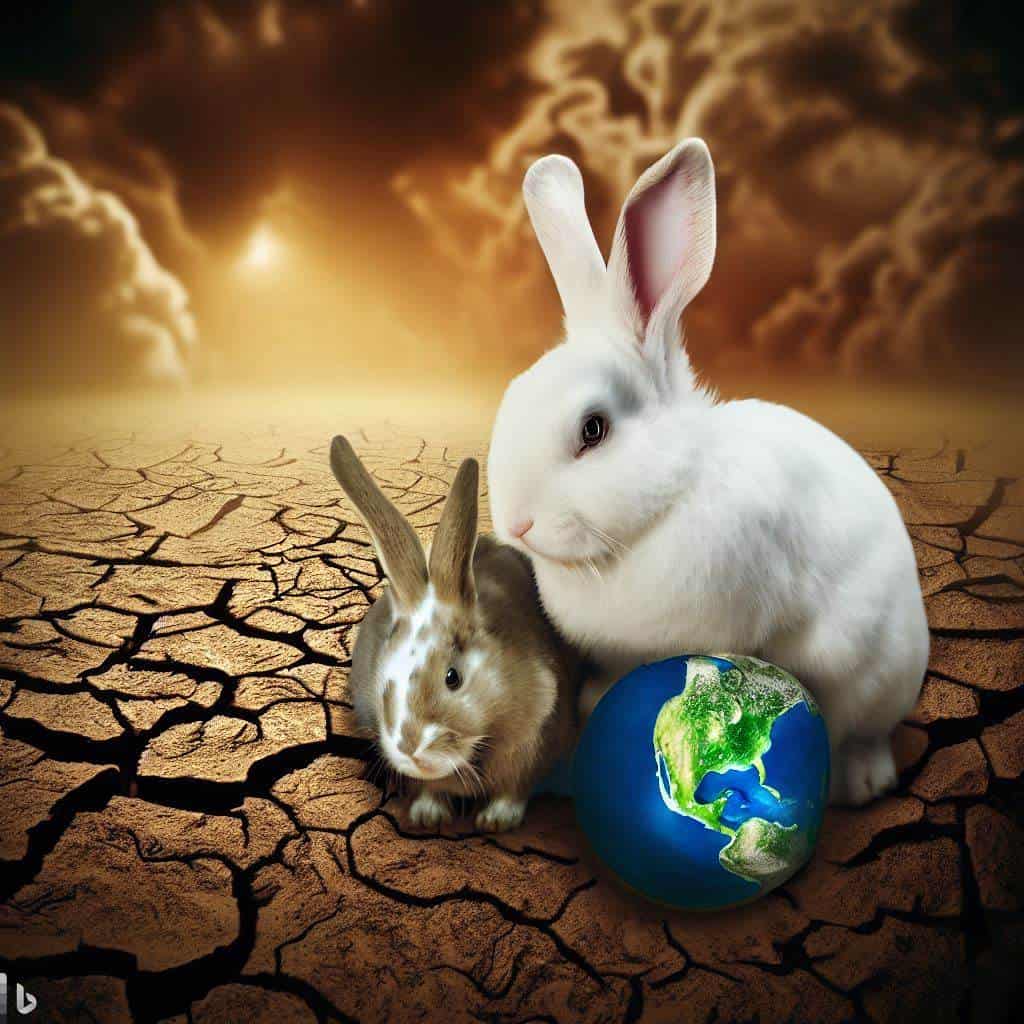Disclosure: We may earn money or products from the companies mentioned in this post.

While there may not be direct research specifically addressing how climate change impacts indoor pet rabbits, there are certain considerations and correlations we can discuss based on the general effects of climate change on pet and human health.
- Heatwaves and Extreme Temperature Changes: Climate change is associated with more frequent and severe heatwaves. Pet rabbits are sensitive to heat and can suffer from heatstroke. Even if the rabbit lives indoors, a home without adequate air conditioning can become dangerously hot during a heatwave (We’ll talk more about this later). Similarly, if there are sudden or extreme temperature changes, it could lead to stress and potentially exacerbate any existing health conditions in the pet rabbit.
- Increased Parasites and Disease Spread: Climate change can lead to increases in populations and the geographical spread of certain parasites and diseases that affect rabbits, such as ticks and fleas. These can potentially be brought indoors by other pets or people.
- Air Quality: Climate change is linked to worsening air quality due to increased wildfires, pollen, and other pollutants. Rabbits have sensitive respiratory systems and exposure to these elements, even indoors, can lead to health problems.
- Changes in Food Quality and Availability: Climate change can impact the availability and quality of certain types of food that rabbits eat, particularly fresh fruits and vegetables. This could potentially impact the diet of pet rabbits.
- Stress: While more indirect, rabbits can sense stress in their human caretakers. Therefore, events caused by climate change that lead to human stress could potentially influence the well-being of pet rabbits.
To mitigate these potential impacts, rabbit owners should be vigilant about their pets’ health, maintain a comfortable and stable indoor temperature, regularly check for parasites, ensure good air quality indoors, and provide a balanced diet.

Helping Your Indoor Rabbit During Lost Power In A Heat Wave
Losing power during a heatwave can be a serious issue, especially for pets like rabbits that are sensitive to high temperatures. Here are some steps you can take to keep your rabbit cool without electricity:
- Create a Cooler Environment: Move your rabbit’s cage to the coolest part of your home, such as the basement or a tiled bathroom floor, away from direct sunlight.
- Use Cooling Elements: Freeze bottles of water and place them in the cage so your rabbit can lean against them to cool down. Be sure to wrap the bottles in a cloth so they’re not too cold against your rabbit’s skin. Refresh these frequently. Ceramic tiles can also be used as they stay relatively cool compared to the surrounding environment.
- Hydrate: Make sure your rabbit has constant access to fresh water. Hydration is key in preventing heatstroke. You might even try giving them water-rich veggies (like cucumber) to help them stay hydrated.
- Ventilate: If it’s safe, open windows and doors to allow for air circulation. However, be cautious if outdoor air is extremely hot or poor quality (due to smoke or high pollen, for example).
- Wet Ears: Rabbits regulate their body temperature through their ears. Dampening their ears with cool (not cold) water can help them cool down. Be careful not to get water into the ear canal.
- Monitor Closely: Keep a close eye on your rabbit for signs of heatstroke, which can include panting, lethargy, red ears, and loss of appetite. If you notice any of these signs, contact a vet immediately.
- Get Out If Necessary: If the temperature is dangerously high and you’re unable to cool down your home, consider temporarily relocating to a cooler place if possible.
Remember, these steps are emergency measures and not a replacement for a temperature-controlled environment. Regular vet check-ups are essential to ensure your rabbit’s health, and a vet should be consulted at the first sign of distress or overheating.

